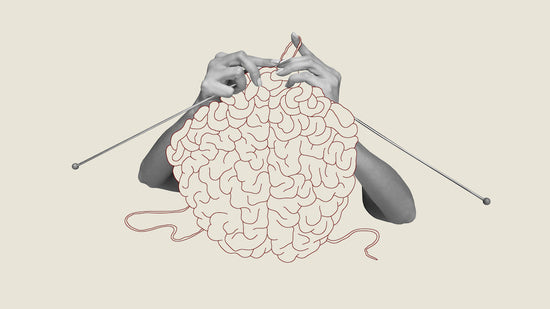
Anti-stigma campaigns: do they work
©hbrh / Adobe Stock
Anti-stigma campaigns work: do they work
Assistant Professor, Schulich School of Medicine and Dentistry, Department of Psychiatry, Western University
Despite numerous anti-stigma campaigns over the last few decades, stigma still exists. Teaching about implicit stigma could be a more an effective way to reduce stigma.
"Stigma is everywhere."
We have come a long way in understanding mental illness and addressing the social stigma that affects those who suffer. Stigma is a negative stereotype, in this case about mental health. National and international public education campaigns are helping to bring the topic of mental illness out of the shadows but do anti-stigma campaigns work?
Unfortunately, despite widespread recognition, and significant investments in anti-stigma campaigns, the problem of stigma remains. Those who look for help for their mental illness or addictions encounter a system that can make them feel blamed and shamed.
In my own lived experience as a psychiatrist, and with recent evidence I have gathered as a stigma researcher, I have seen the damaging effects of stigma. When a young person builds up their courage to ask for help and share their story, how the health system responds can have a profound impact on this young person’s future.
I have also heard from many health professionals who want to be better at helping those with mental illness, and are genuinely interested in reducing stigma, including through anti-stigma campaigns. Consider the following example: when teaching medical students about stigma, a student once asked me, “Why is psychiatry the only rotation that gives us wearable panic [alarm] buttons?”
Responding to this question in a safe, non-judgmental and open manner is essential. If we challenge health-care professionals too aggressively, we may worsen their feelings of guilt, and shame.
Can we be stigma-free through education?
Providing basic education programs or lessons for people about the negative impacts of stigma does not seem to be enough to change people’s behavior or attitudes. And shaming people who might demonstrate negative beliefs or behaviors towards mental illness can make stigma worse by triggering a defensive, and counterproductive response from them.
Sometimes, when people who have lived experiences of stigma share their story, it may help to reduce stigma. However, such initiatives have limitations. Hearing the story of someone who looks like me and talks like me might have some impact. But if there is someone who does not speak the same language as me or is a different generation from me, their story will have less impact.
Also, there are circumstances when this type of exchange between the mentally ill and those who are not ill may reinforce negative stereotypes about people with mental illness.
Most anti-stigma reduction programs start with the ridiculous assumption that there are “bad” people who stigmatize others, and “good” people who do not.
Training often involves making participants feel judged for stigmatizing others, especially when they do not mean to stereotype. We know from science, that we can all be guilty of perpetuating the stigma of mental health; this can be normal. Our brains organize information using heuristics, and categories all the time.
Therefore, changing the conversation about stigma requires a different way of thinking.
That is, despite our best intentions, we are all a product of our upbringing, and susceptible to the messages around us. If we start stigma reduction education with the default assumption that we all hold certain types of stigma, and that we can never eradicate it, we can start having a different kind of conversation.
Making the explicit, implicit
Talking about the concept of implicit stigma may help shift our approach. Implicit stigma is something that exists outside our awareness and influences us despite our best intentions.
Since the first step to reducing implicit stigma is making it explicit, my research team and I found that there are a lot of negative emotions that accompany the realization that we may have stigma despite our best intentions.
Yet simultaneously, our implicit stigma can also perpetuate discrimination for some of the most vulnerable members of society. While addressing the harmful impact of stigma is important, and possible, it also requires changing our mindset. Teaching and learning about implicit stigma represent a different way of thinking about the issue.
Accepting flaws can help us become change-agents
In a recently published study, we explored how teachers and learners manage the tensions that occur during the process of learning about their own implicit stigma. We learned that recognizing implicit stigma triggers compartmentalization between the ideal version of ourselves, and who we truly are.
This work suggests that successfully managing implicit stigma requires reconciling these tensions through striving for the ideal version of ourselves while accepting our flaws and vulnerabilities.
Another challenge with implementing stigma training is that stigma is embedded within our culture. In another study, we followed participants for several months after they participated in implicit stigma training.
Initially, they told us that learning about stigma motivated them to change their behavior, but they felt this was challenging to do. As we followed them, they began reflecting on their stigma and channeling their frustration into actionable behaviors that they could change. Over time, they saw themselves as role models and became change agents within their workplace. Together, these individuals described themselves as co-constructors of social change.
Always progressing, never flawless.
Can we become stigma-free? The answer is not as simple as you may think.
We encourage all educators to consider how they frame their interventions regarding stigma. If we want to address the harmful impact of stigma, we must normalize stigma.
Having stigma is not something that should make us feel ashamed or guilty. Nor should we worsen feelings of guilt, or shame.
Reducing stigma cannot be accomplished without practicing self-compassion and self-forgiveness. We can strive for the best version of our selves while accepting that we will always be flawed. Always practicing; forever improving; never perfect.










